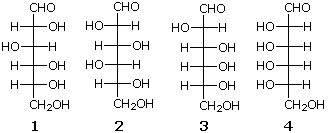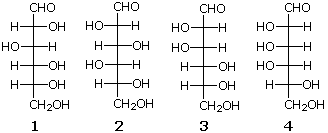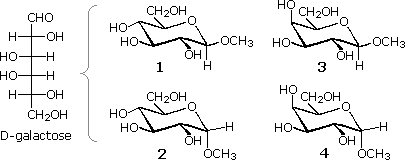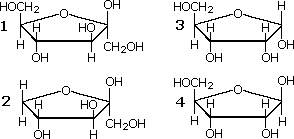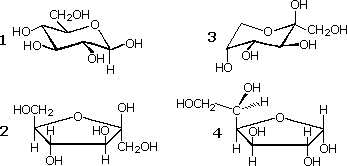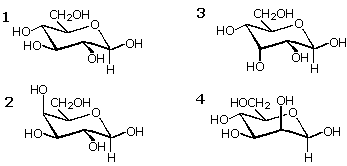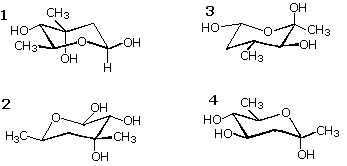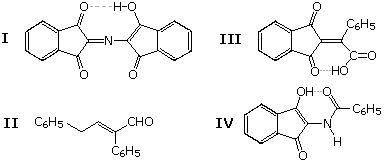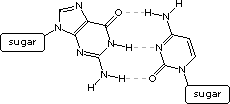
Learning Technology -attempt at tech ology and history
What distinguishes us as a species is tools and technology. More accurately, what distinguished the many species that we evolved from and co-evolved alongside us is technology. It is not that other species such as birds and primates, do not use tools, but the first of our genus Homo habilis (handyman) through to Homo sapiens (knowing man) are simply the most successful of these competing species. We had better tools and technology.
We see technology as a noun, not a discipline or subject. There is no -ology for technology, stuck as it is somewhere between science and engineering. Yet this is an area of human endeavor that has shaped history, economics, sociology, psychology, and philosophy. What we need is a focus on Technology, like Archaeology, Geology, Biology, or Sociology. We need a deeper understanding of technology in terms of its history and role in history.
To this end, we can look towards the science of technology as uncovering certain laws of technology, not laws as in physics, chemistry, or biology, but rules that emerge from the way we invent, develop, deliver and use learning technology.
Learning technology
But there is one type of technology that differs from the rest – learning technology. At key moments in our history, fundamental technologies were invented that unlocked massive cultural growth.
1. Learning technology has a cultural & economic impact
2. Learning technology is a multiplier
3. Learning technology extends cognition
4. Learning technology replaces teaching with learning
5. Learning technology scales
6. Learning technology is enabling new pedagogies
7. Learning technology draws from consumer technologies
8. Learning technology melds hardware and software
9. Learning technology can be both good and bad
10. Learning technology gets declassified
Learning technology has a cultural impact
There have been many attempts to read history as being catapulted forward in economic cycles caused by innovations in technology. What no one has ever done is apply that logic to learning technologies, yet technological advances may have led to specific advances in stone axe technology and cave images, that required the teaching and learning of sophisticated skills. Writing, a skill that had to be formally taught and learned, undoubtedly led to cultural and economic change, as did the alphabet, that tweak to writing that gave eastern Mediterranean culture a central role in early science, philosophy and literature, especially in Greece, a cultural root that reverberates down to us today. The world was in a steady state during the Dark Ages when writing technology was stuck in manuscript production, in the hands of a priestly class, but sprang into life with printing, causing a Scientific Revolution and Religious Reformation. The era of mass schooling and mass production of pencils, pens, paper, notebooks, chalkboards, literally educated the masses, increasing the cultural capital of the world. Then came calculators and computers that sped up technological progress. It got us to the moon and energized economies and the management of capital. Hot on its tail, as this process is exponential, came the internet, which globalized finance, economics, production and consumption. Finally, we are in the era of AI and data. We are already feeling the pressure in the age of algorithms. For the first time we have learning technology that doesn’t just help us tech and learn – it can learn itself. We are only just getting to grips with the idea that learning is not the sole domain of our genus but of the very technology we have created.
On the mechanics of technological change, a seminal text is Schumpeter's Theories of Economic Development, where cycles of economic development are seen as being driven by innovative technology as their cause. Carla Perez in Technological Revolutions and Financial Capital expands on the idea to identify specific cycles of over-effusive investment, slumps, then a period of fruitful investment that results in significant improvements in productivity. In other words, we overestimate technology in the short-term, underestimate it in the long-term. There is a parallel process with learning technologies. Technologies are invented, then go through a period of non-learning use, eventually being applied in teaching and learning. It is when a technology is used in teaching and learning that the multiplier effect works through to economic growth.
Learning technology is a multiplier
These learning technologies; language, writing, printing, computers, the internet and now AI, released exponential growth in knowledge and learning. The ability to learn, document, write, calculate, explain, plan and execute most of what we normally think of technology (mechanical, electrical, chemical and physical) relied on and still relies on learning technologies that underly their ideation. The great leaps forward in the history of our species have been on the back of these leaps of the imagination, the invention of technologies that allow us to use and document our imaginative output to further civilization. It has given rise to great art, science, advances in medicine, finance and every other human achievement.
Learning technology is a cultural and economic multiplier. It is not simply additive. It is the root cause for paradigm shifts. These shifts are often seen in terms of materials (stone, bronze, iron, water, steel, steam, silicon chips) or mechanical devices (weapons, ships, steam engines, looms, cars, domestic devices, airplanes, rockets, satellites, computers, tablets, smartphones), when what lies beneath their development is learning, enabled by learning technologies. The more obvious visible, physical manifestations, are in fact, the effects or products of that wider and deeper learning. Learning has been progressively accelerated by learning technologies and that has had a compounding effect on output. With each successive development of technology, from cave paintings, writing, alphabets, printing, computers, the internet, and AI, we get acceleration.
Yet learning technology is mostly ignored in favor of the crude, mechanical history. We think of technology in terms of one form of technology – the obvious and physical. We still fail to recognize that the history of technology has a hidden story of cognitive effort and progress that made this surface technology possible. Beneath the physical manifestation of technology lies cognitive technology that the brain itself uses to create and share ideas – learning technology. “At a few times in history, people have hit upon technologies that multiply, indeed exponentiate the growth of knowledge,” said Stephen Pinker. They are inflection points in the history of our species.
Learning technology extends cognition
Where do the mind stop and the rest of the world begin? asked Chalmers and Clark in The Extended Mind. Their examples include the use of pens and computers to learn and do things.
Cognitive technologies, such as speech, writing, alphabets, mathematics, audio, video, and other media, allow our minds to directly create, express, manipulate, distribute and scale our thoughts. They also allow our minds to listen, read, understand, and learn. The pen, pencil and keyboard, and touchscreen can be seen as extensions of consciousness. As tools, they are almost part of one’s mind and body. Some philosophers have put forward this idea of extended consciousness or cognition as an alternative theory of consciousness. Once written, the object is then a piece of captured consciousness that can be read by others. It is this creation of another archived realm that allows us to escape the tyranny of time and place. The written word can be read at any time in any place. It becomes an object in itself, the creation separated from its creator. This is how learning escapes the tyranny of the human teacher.
Whether as a learner or teacher, learning technology extends the mind in several dimensions. First and foremost, it changes long-term memory, the fundamental aim of learning. With that change, we escape the tyranny of time by being able to think about the past as history and future possibilities. The faculty of imagination is fuelled by knowledge and skills. We can also escape the tyranny of location and learn about places beyond our place of residence, even the planet. It also provides the ability to learn to read and write, learn other languages, appreciate other cultures, learn mathematics, science, appreciate art. Some see learning technology as literally an extension of consciousness, the pen or smartphone as part of consciousness.
Many technologies were extensions of and protection of our bodies, clothes, homes, domestic appliances, tools, weapons, transport, glasses. Some, however, are extensions of the mind; pens, pencils, erasers, print, books, computers, smartphones, digital assistants, and so on. The language appeared millions of years ago, writing thousands, printing hundreds, broadcast media a hundred or so years, and in just decades we’ve seen computers, the internet, and AI appear. We are now seeing the exponential invention of ‘cognitive’ technologies.
Learning technology replaces teaching with learning
This is a matter of degree but there can be no doubt that writing, printing, broadcast media, computers, the internet, and now AI and data, have to different degrees replaced the need for a physical teacher. Most learning no longer takes place in the presence of a teacher but in other contexts made possible by learning technology. We read, write, watch videos, hear podcasts, access the vast knowledge base on the internet, and now use voice assistants, all in the absence of other humans. With each successive stage of learning technology, the act of learning has changed. The locus of learning has shifted away from the live, synchronous teacher to asynchronous learning. This is an uncomfortable truth for many but a truth nevertheless.
Learning technology scales
As learning technology evolved, its scalability increased. As soon as we invented writing, we freed learning from the tyranny of space and time. Knowledge could be captured, distributed, and be made available to many others in different places, at different times. This was accelerated with printing, as identical copies could be mass-produced and distribution could take place at national and international levels. This scaled-up even more with broadcast media, such as radio and TV. It went global with the internet. Another dimension of scalability is now possible with personalization, AI, and data-driven learning.
Learning technology is enabling new pedagogies
New pedagogic techniques are enabled by new learning technologies. The humble pencil and eraser allow one to fail, erase and retry, allowing one to fail as one learns. That is a good, simple example of how a piece of technology can enable a pedagogic advance. Cutting, pasting, spellcheck, grammar check, synonym-selection and editing tools all help one to write. Allowing learners to do cognitively effortful learning on a computer allows them to do things on their own free from doing it at a specific time and place. AI and data-driven systems allow pedagogic techniques like personalization, deliberate practice, spaced practice, and motivational pedagogies such as behavioral, nudge theory to be delivered. In general, there is a wider set of pedagogic options that can be blended into an optimal blend suited to specific target groups of learners, and types of learning.
Learning technologies draw from consumer technologies
Few technologies were ever designed specifically for learning. Early writing was almost exclusively used to ‘account’ for the products of agriculture and other goods, exchanges and treaties. Manuscripts were for religious consumption only. Printing was initially restricted to Biblical and other related texts. Broadcast media were mostly about news and entertainment. Computers were, and are still largely, the technologies of work and play. The internet became an agora for information, e-commerce and social media. AI and data are used for practical purposes in the mediation of interfaces such as Google, social media, Netflix, and Amazon. They have all been used for teaching and learning but this came later and on a smaller scale. But size is not everything. It is the fact that they could be used to learn that gave all of these technologies real potency. In every case, learning turned out to be the killer application.
Learning technology melds hardware and software
The tendency is to see technology in mechanical, material terms. We see this in the many books about technology, such as User's The History of Mechanical Invention. The word technology comes from the Green Techne (art, craft) and logia (writings). My definition of ‘learning technology’ includes both hardware and software, as almost every piece of modern hardware has, as an integral part of its function or output, something that can loosely be called software. The hardware of pens, pencils, erasers and paper have writing as their software. Printed books and papers have writing and images as their software. YouTube has video content as its software. The internet has every media type as its software, as well as code that controls the logic of delivery. In all of these cases, the hardware is inseparable from the software and must be seen as being entwined as technology. Of course, in most discussions of technology, there is a bias towards physical, tangible, mechanical devices, but as James Gleick has shown in his book ‘The Information’, many of our most important advances have been intangible technologies, such as writing, alphabet, audio, images, video, software, and social media.
Brian Arthur's The Nature of Technology sees combinations of technology as the deep driver of technological innovation. It is especially true of learning technology. The long history of learning technologies from the pigments, brushes, pots, and lamps used in cave drawings have always been combinations. Writing instruments, whether brushes, pens, or pencils, need pigments or inks to transfer writing to yet another form of technology, papyrus, parchments, or paper, which in turn allow is to replicate texts as software to be read. Combinations of different technologies - presses, metallic letters, ink, and paper - gave us printing, with copied texts being the readable software. The computer brought together different media; text, graphics, audio, video, animation, and now VR and AR in a combined, multimedia device as media of the mind. The internet brought these to a global audience for learning, with Wikipedia for text, YouTube for video, podcast services for audio, and many other free learning resources, such as MOOCs, Duolingo, Khan Academy. So learning technology has always been a combination of technologies, physical and psychological, right through to the modern smartphone, which is a learning device among other things.
Learning technology can be both good and bad
The pen may be mightier than the sword but most technology, also learning technology, still has ethical consequences. These ethical dimensions are fairly muted compared to weaponry, the carnage of driving cars, and fossil fuels in engines. We continue to drive cars in the face of the indisputable fact that nearly 1.5 million people die horrific deaths every year in car crashes. The figure for those maimed and injured is much higher. This is the casualty equivalent of an annual World War. Many other technologies have similar ethical dichotomies. Plastic syringes may save lives but plastic may be killing our oceans. Bitcoin and blockchain may be innovative technologies but as havens for money laundering and tax evasion, along with energy needs harmful to climate change, are a consequence. Learning technologies are nowhere near as lethal but few would deny that there are downsides. Paper production means felling trees and is one of the most polluting manufacturing processes we have ever invented. Billions of plastic bricks have been produced by a famous Danish toymaker. The internet and AI have given us ethical issues that are well known.
Even the humble LMS has had a genocidal side. Tom Watson, CEO of IBM flew to meet Hitler in 1939 and sold him a primitive, punch-card, Learning Management System, called the Hollerith system. As told in the excellent book IBM and the Holocaust by Edwin Black, it stored data on skills, race, and sexual orientation. Jews, Gypsies, the disabled and homosexuals, were identified and selected for slave labor and death trains to the concentration camps.
Although some present education is always intrinsic good, it is not without its ethical problems. At one level it can be argued that it sometimes increases social inequalities and uses time and money that would be better spent elsewhere. It has also been used for ideologies that have proved harmful, at the outer extremes of the political spectrum. The hideous genocides of Stalin, Mao Tse Tung and Pol Pot were the result of an educated class producing ideas that were used to literally eliminate entire strata of populations. The learning technology of propaganda has been used to educate and, even worse, ‘re-educate’ dissenters. It is clear, then, that learning technology is not always an intrinsic good. It can be a pedagogic trap, even destructive force.
Learning technology gets declassified
We also have to recognize that what we see as technology tends to fade and be declassified as technology. Anything invented before we were born is often seen as just being there and not categorized as technology. So writing, pens, pencils, erasers, and paper are de-technologized. Books, magazines, and printed materials are seen as worthy precursors to new technology, ignoring the fact that they were the technology of their age and seen with similar levels of suspicion and condemnation. Chalkboards are worthy, PowerPoint is unworthy. Broadcast media such as film, radio, and TV have now achieved that standing as a technology with a certain prestige, compared to new media. Even more traditional services on the internet are regarded with fondness when compared to the products of AI and data. Time is a great healer and the technology of the day now quickly becomes the technology of yesterday and not really technology at all.
In my next piece, I outline the history of learning technology. This will be followed by pieces on each stage.
Stage 1 Prehistory. Stage 2 Writing, Stage 3 Printing, Stage 4 Broadcast media, Stage 5 Computing, Stage 6 Internet, Stage 7 AI and data





